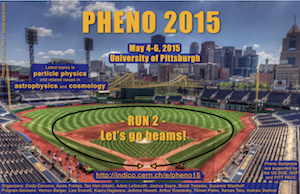Speaker
Mr
Sungwoo Hong
(University of Maryland at College Park)
Description
We consider theories where dark matter is composed of a thermal relic of weak scale mass, whose
couplings to the Standard Model (SM) are however too small to give rise to the observed abundance.
Instead, the abundance is set by annihilation to hidden sector states that carry no charges under
the SM gauge interactions. In such a scenario the constraints from direct and indirect detection,
and from collider searches for dark matter, can easily be satisfied. If the hidden sector includes
Goldstone bosons, fermions or vector gauge bosons, these particles can naturally be light, their
masses being protected by symmetries. These states can then contribute to the total energy density
in radiation, leading to observable signals in the cosmic microwave background (CMB). Furthermore,
depending on whether or not the light hidden sector states self-interact, the fraction of the total
energy density that free-streams is either decreased or increased, leading to characteristic effects on
both the scalar and tensor components of the CMB anisotropy. In particular, we show that the
locations of the CMB peaks are shifted, with the sign of the shift depending on whether or not these
new light hidden sector states carry self-interactions. The magnitude of these signals depends on
the number of light degrees of freedom in the hidden sector, and on the temperature at which it
kinetically decouples from the SM. We consider a simple model that realizes this scenario, based
on a framework in which the SM and hidden sector are initially in thermal equilibrium through the
Higgs portal, and show that both the energy density and self-interaction signals can be compatible
with recent Planck results, while large enough to be detected in upcoming experiments such as
CMBPol and CMB Stage-IV.
Authors
Mr
Sungwoo Hong
(University of Maryland at College Park)
Prof.
Takemichi Okui
(Florida State University)
Dr
Yanou Cui
(Perimeter Institute for Theoretical Physics)
Prof.
Zackaria Chacko
(University of Maryland at College Park)
